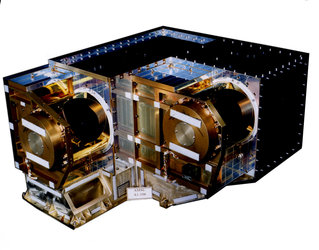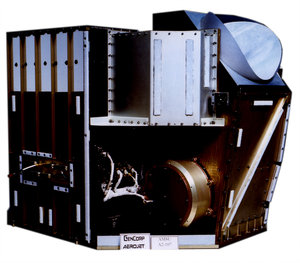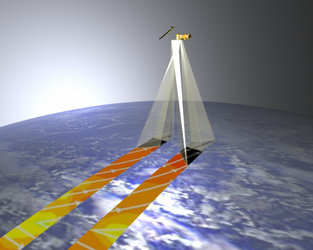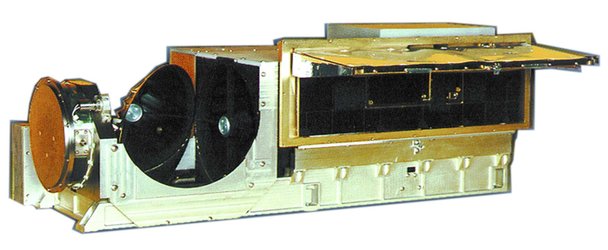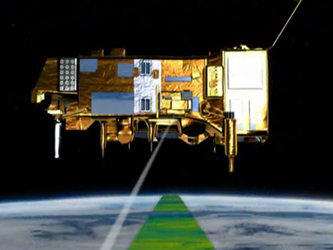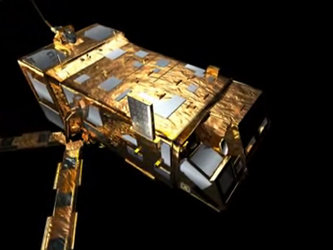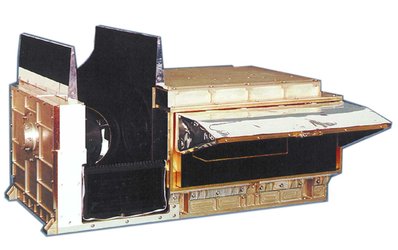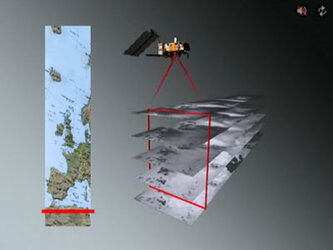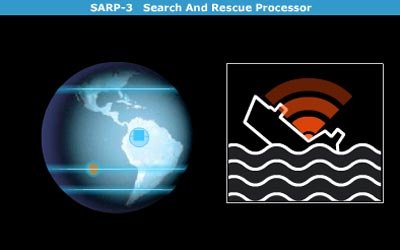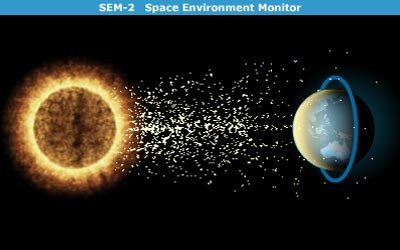HIRS/4 scan subsystem
The scan subsystem provides a digitally positioned direct drive mechanism for moving the scan mirror through Earth scanning and radiometric calibration. The scan subsystem includes the:
- power, control and motor drive electronics
- scan drive motor
- Beryllium scan mirror
- shaft angle optical encoder
- tachometer
- torque motor
A permanent magnet rotor-type stepper motor that has two stator windings drives the scan mirror. It is used in a basic four-step cycle with 50 cycles per rotation, giving 200 incremental 1.8° steps per rotation.
The resulting Earth swath is ± 49.5° with respect to the nadir direction.
The DC torque motor has a permanent magnet bar type rotor. This motor is used to help stop the scanner rotation at any selected position.
Filter Wheel Sub-Assembly The separation of infrared channel information is done by sequentially sampling the energy passing through individual spectral filters in the rotating filter wheel. The filter wheel is directly mounted on the rotor of a two-phase 40-pole hysteresis synchronous motor driven at precisely 600 revolutions per minute.
Detectors There are three detectors in the instrument. A Silicon photodiode at the instrument ambient temperature (nominally 15°C) is used for the visible channel, whereas the long-wave and short-wave IR channels respectively use a HgCdTe detector and a InSb detector that are mounted on the patch of the instrument radiant cooler.
Radiant Cooler Assembly The short-wave and long-wave infra-red detectors are mounted on a two-stage passive radiant cooler and operate at a stabilized 95K temperature.
An Earth shield door on the cooler assembly shadows the radiator from Earth direct thermal input. The door is released after the initial orbital outgas period. During the outgas / decontamination period, the cooler temperature rises to approximately 300K.
The door deployment is performed by spring loaded hinges with a redundant solenoid actuated cam. The cooler door opening mechanism is automatically de-energized within two seconds after the Door Deploy Command is executed within the instrument. The door, once deployed, cannot be closed without manual intervention.
Optical Assembly The HIRS/4 scene energy collection optic is a 15 cm Cassegrain telescope. Two subsequent beam splitters separate the collected energy into long-wave IR components, short-wave IR components and the visible channel.
Its characteristics are summarized as follows :
- instantaneous scene field of view : 0.69 ± 0.04° (circular, approx. 10 km at 833 km orbit altitude)
- total telescope field of view : 1.8° nominal
Baseplate The baseplate unit is the common structure on which all other modules are mounted. It is the physical interface to the satellite. It is also the major interface for the radiative thermal control of the instrument.





